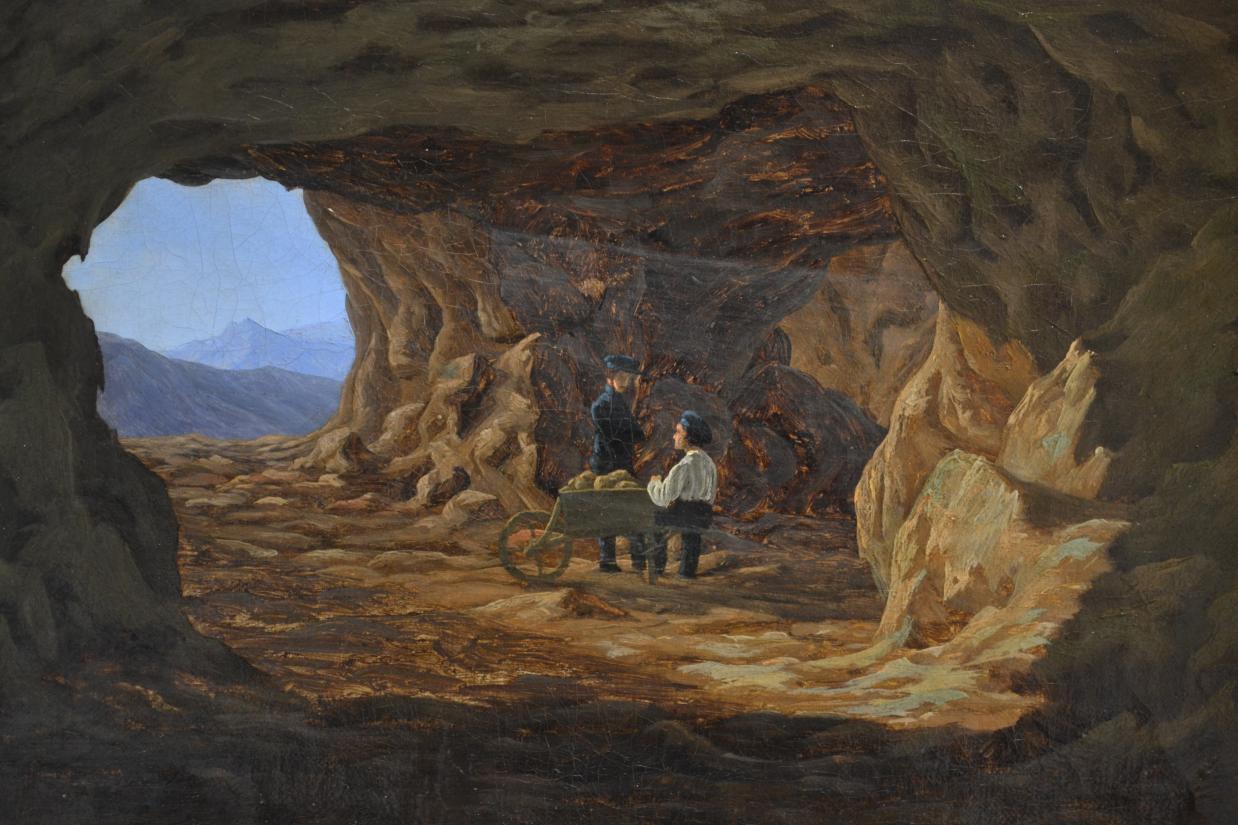With dramatic light effects and an eye for the mysterious, Martinus Rørbye painted Scene From a Rocky Cave, Cervara in 1835. Rørbye created the painting during a journey following in the footsteps of his old teacher C. W. Eckersberg. From 1834 to 1837, Rørbye thus toured Italy and Greece and even went as far afield as Turkey. With inspiration from natural landscapes and local culture, Rørbye created several paintings during his travels.
A fascination with geology and with Italy
Rørbye had a keen interest in geology. During his travels he visited several natural history collections, studying rocks and geological samples. Just outside Rome, Rørbye visited the caves at Tor Cervara. The rocky caves, which had been a source of raw materials for ancient Rome, were now a popular destination for artists. In his travel journals Rørbye describes visiting the fascinating caves with his friends:
‘Went on a tour with Wulff through Porta Maggiore, past Torre de Schiavi and Bocca di Leone to Cervare, spent most of the day there, painting and exploring these interesting caves ...’
Inside the caves, Rørbye was able to study the geological formations and rugged tuff surface up close and to take in the distant mountain peaks fading into shades of blue. In the painting, the sunbeams pour through the mouth of the cave like light from a projector, creating a scenic effect. Inside the cave, the sunlight illuminates two local men, whom Rørbye portrays with an ethnographer’s curiosity, as they go about their daily life and work in the mountains.
Near and distant
Rørbye plans his images with deliberate care. Often, an aperture or a window reveals something outside the main image. In Scene From a Rocky Cave, Cervara, the blueish mountains in the background have a prominent presence, despite their remoteness. The painting becomes an interplay between inside and outside, near and distant. The cave represents the inner, enigmatic element revealed by the light, while the peaks in the horizon add a sense of romantic yearning for faraway places and dramatic landscapes.
About Martinus Rørbye
Martinus Rørbye (1803–1848) was born in Norway but came to Denmark with his family, where he studied at the Royal Danish Academy of Fine Arts in Copenhagen under C. W. Eckersberg. Later, from 1844 until his death, Rørbye was a professor at the Academy. Rørbye was one of the best-travelled proponents of the so-called Golden Age of Danish visual art. At Ribe Art Museum, the painting from Cervara will be part of the museum’s collection of travel-themed Golden Age paintings, which also includes Rørbye's Klostergang i Palermo (Cloister in Palermo).



